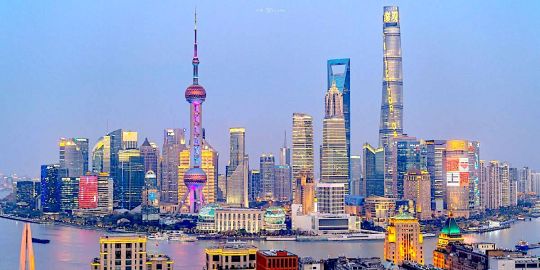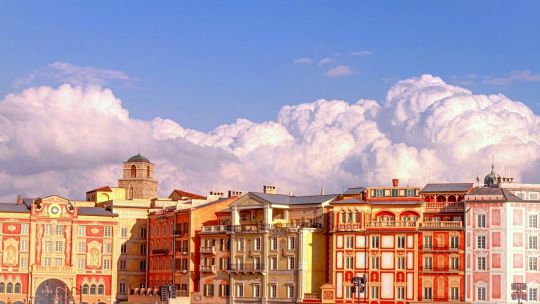#city index india
Explore tagged Tumblr posts
Text
MSCI EM IMI इंडेक्स में भारत ने चीन को पछाड़ा, भारतीय शेयर बाजार में आएगा 4.5 अरब डॉलर का निवेश
MSCI EM IMI इंडेक्स में भारत ने चीन को पछाड़ा, भारतीय शेयर बाजार में आएगा 4.5 अरब डॉलर का निवेश #News #MSCIEMIMI #EmergingMarkets #InvestmentStrategy #StockMarket #FinanceGoals #FinancialIndependence #GlobalMarkets #InvestmentTips #WealthManagement
Morgan Stanley IMI Index: मॉर्गन स्टेनली के एमएससीआई इमर्जिंग मार्केट इंवेस्टेबल इंडेक्स (MSCI EM IMI) में सितंबर, 2024 के दौरान भारत ने वेटेज के मामले में चीन को पीछे छोड़ दिया है। सूत्रों ने ये जानकारी देते हुए कहा कि MSCI EM IMI में भारत का वेटेज चीन के 21.58 प्रतिशत की तुलना में 22.27 प्रतिशत रहा। एक्सपर्ट्स का अनुमान है कि एमएससीआई ईएम आईएमआई में हुए इस बदलाव के बाद भारतीय शेयर बाजार में…
#mobilklasik morgan mobil#4.5 billion dollars investment#angeles city#anlagestrategie#canadian etf#Collector#etf-vergleich#european investor#geldanlage#India overtook China#Indian stock market#investment advisor#investment banking after graduation#investment banking analyst#kapitalanlage#kumita ng pera gamit ang cellphone#make money online#morgan stanley#morgan stanley report on share market#morgan stanley update#MSCI EM IMI index#pagkakitaan online#pampanga#scalable capital#shweta arora#standard and poors#wiley
0 notes
Text
what city you should live in based on your moon sign ⏾


astrology can help you make an informed decision for something as significant as where one will live. and especially if you are a more hedonistic person like myself, choosing a place to live with a focus on personal satisfaction is a guaranteed upgrade in quality of life. it also helps you narrow down what your true emotional needs are and live a life more in alignment with your truest self.
choosing what city to live in based on your moon sign helps an individual with emotional fulfillment, being able to create a sense of belonging, stress reduction, enhanced creativity and productivity, better romantic and platonic relationships, and so much more.
here are my thoughts on your ideal city based on your moon sign:
一
⏾ virgo moon 一
kobe, japan + washington, D.C. (USA) + zurich, switzerland
you likely prefer a clean, walkable city that is health-conscious. ideal cities have paved roads, a lack of industrial machines or well-regulated factories, and a structured, straightforward urban planning model. a city safe enough to raise babies and young children is your benchmark. you value a city that emphasizes logical aspects of life. air pollution and trash management are crucial, so you'd thrive in cities with high air quality indexes, like those mentioned above.
一
⏾ libra moon 一
florence, italy + brooklyn, new york + capetown, south africa + amsterdam, netherlands + paris, france
as one of my favorite moon signs, you truly appreciate beauty, harmony, and aesthetics in where and how you live. you love cultured cities with plenty of artistic experiences. perhaps you're an artist yourself, seeking communities where you can express that creativity. a city that offers a balance of cityscape, mountainscape, and access to bodies of water appeals to your sense of harmony. you’re drawn to colorful, multicultural environments where you can accumulate luxury goods.
一
⏾ scorpio moon 一
new orleans, louisiana + mumbai, india + providence, rhode island
this one is tricky because scorpio Moons are known for being extremely intense and private, which doesn't always translate to a livable city (think Bermuda Triangle). however, you likely value transformative experiences and a form of social power. you want to be in a city that matches your intensity—a place that might be politically involved, spiritually inclined, or even part of some controversy. communities where you can explore taboo subjects or rise within social hierarchies are ideal for you.
一
⏾ sagittarius moon 一
toronto, canada + prage, czech republic + krabi, thailand + dubai, UAE
as one of the more hedonistic moon signs, you crave freedom—to be, to do, to have, etc. you prefer cities with a lot of versatility for living, offering options like big homes, sprawling lofts, small cozy one-bedrooms, and everything in between. cultured and religious cities appeal to your belief system, which is crucial to you. You need a place where you can live your philosophies freely and have fun. a city with many opportunities for adventure and easy access to other exciting places is essential. think road trips, bungee jumping, scuba diving.
一
⏾ capricorn moon 一
london, england + manhattan, new york + melbourne, australia
one word: old-fashioned. capricorns are often seen as traditional, and there's a reason for that. as a capricorn moon, you value cities that operate like institutions—places that have stood the test of time without much change to their foundation. ambition and hard work are of utmost importance, so cities with a professional or hustle culture appeal to you. you are drawn to cities in countries with a strong identity or culture that gratify your sense of tradition. cities where you can network, accumulate wealth, and indulge in luxuries are your ideal.
一
⏾ aquarius moon 一
san francisco, california + rome, italy + new orleans, louisiana + portland, oregon
with pluto in aquarius, I anticipate more moves for aquarius moons, which is great because this is the most community-centered sign in my opinion. aquarius moons value living in cities where they can positively contribute, socialize, and build relationships based on shared interests. you are drawn to innovative, creative cities that are always ahead of trends. you also appreciate cities that are civically mindful and contribute to humanitarian efforts on both local and grand scales.
一
⏾ pisces moon 一
bali, indonesia + bora bora, french polynesia + rome, italy + paris, france
pisces moons are one of the moon signs that truly need to feel "drawn" to a place before visiting or residing there. emotional fulfillment, romance, and creativity are non-negotiable for pisces moons. because of this, beautiful, artistic cities with many opportunities to be near bodies of water are ideal. beach cities and honeymoon destinations are perfect for pisces Moons' empathic and sensitive nature. A city with a calm undercurrent is essential to satisfy your need for rest and peace.
一
⏾ aries moon 一
rome, italy + los angeles, california + tokyo, japan + cairo, egypt + mumbai, india
similar to capricorn moon, its cardinal sibling, aries moons need the opportunity to keep on the go wherever they live. For this reason, you're best suited to "cities that never sleep"—places where you can stay active, compete in major global industries, and reach newer heights. you're drawn to cities with fiery traditions and those that excel in national rankings. you also appreciate cities that are vocal about their value systems and embrace trends.
一
⏾ taurus moon 一
honolulu, hawaii + havana, cuba + las vegas, nevada + ibiza, spain + tokyo, japan
much like libra moons, venus-ruled moons love venus-ruled cities. taurus moons enjoy cities that are comfortable in every sense—materially, socially, politically, and aesthetically. you appreciate cities that are openly hedonistic—notorious vacation spots are actually great places for you to establish yourself. cities with strong tourism markets are good for your desire for material success as they are epicenters of culture and attract people from all walks of life.
一
⏾ gemini moon 一
chicago, illinois + boston, massachusetts + cairo, egypt + lisbon, portugal
as a gemini moon, cities that are versatile, education-centered, and logical are appealing to you. you thrive in places where "everyone knows everyone" and socializing is a priority. cities known for their educational institutions and vibrant social life satisfy your need for variety and communication. cities with a strong tourist presence are also appealing, as you enjoy the ability to feel like a tourist in your own city at any time.
一
⏾ cancer moon 一
sydney, australia + niagara falls , new york + instanbul, turkey + berne, switzerland + mogadishu, somalia
cancer moons love domestic cities that are more feminine in nature. Like their sister sign capricorn, they strongly value traditions, both cultural and social, but in a softer manner. they prefer cities with a strong influence by women and things traditionally associated with women, like fashion, beauty, and the arts. cities with beaches and a strong luminary presence are essential, as they are the water-bearers of the zodiac. cities with a balance between domesticity and capitalism appeal to their need for material security and a good home. a city with a strong real estate market and that is ideal for newlyweds and families is also preferred.
一
⏾ leo moon 一
los angeles, california + miami, florida + mexico city, mexico + marrakesh, morocco + ibiza, spain
much like aquarius moons, the need to be around people is prominent with leo moons. leo moons value being in cities that honor appearance and aesthetics. being seen, being talked about, romance, and play are priority for a leo moon when moving. a city where they can explore artistic pursuits and new cultures. cities that promote health and wellness and image. cities with social hierarchies and strong social networks. cities that are "popular" with the whole world. also cities that are known for night-life and social life. cities where you can regularly rub elbows with important people and indulge in the grandiosities of life.
⁎⁎⁎⁎⁎⁎⁎⁎⁎⁎⁎⁎⁎⁎⁎⁎⁎⁎⁎⁎⁎⁎⁎⁎⁎⁎⁎⁎⁎⁎⁎⁎⁎⁎⁎⁎⁎⁎⁎⁎⁎⁎⁎⁎⁎⁎⁎⁎⁎⁎⁎⁎⁎⁎⁎⁎⁎⁎⁎⁎⁎⁎⁎
the moon in astrology is a gateway to a deeper understanding of one's desires, needs, and motivations which can help in making better-informed decisions on where to move or establish a life. I highly suggest you take this into consideration on your next trip or relocation.
thank you for reading 💋
@astrobaeza
for more: [ paidservices ₊ masterlist ₊ tips ]
#astrobae#astro community#astrology tumblr#astrology#astro notes#astro observations#astrobaeza#astrology community#astrology notes#astrology observations#moon signs#fire moon#air moon#earth moon#water moon
1K notes
·
View notes
Text

The New Delhi metropolitan area, home to roughly 55 million people, experienced air pollution more than 50 times the safe limit on Monday. The Air Quality Index (AQI) scale in India’s capital city reached 1,600, which is quite literally off the charts — any measure above 301 is considered hazardous, and the scale used by the U.S. Environmental Protection Agency does not go higher than 500. The deadly haze lingers above the city today, and forecasts predict it will continue into the week.
28.615593°, 77.209023°
Source imagery: Maxar
124 notes
·
View notes
Text
Climate change-driven heatwaves threaten millions

Extreme record-breaking heat leads to severe crises across the world.
Already in 2024, from Israel, Palestine, Lebanon, and Syria in the West; to Myanmar, Thailand, Vietnam, China, and the Philippines in the East; large regions of Asia are experiencing temperatures well above 40°C (104°F) for days on end.
The heatwave has been particularly difficult for people living in refugee camps and informal housing, as well as for unhoused people and outdoor workers.
Using the Heat Index Calculator, at that temperature and a relative humidity of 50%, residents see a heat index of 55°C (131°F) - a temperature level humans cannot long survive:

In February, the southern coastal zone of West Africa also experienced abnormal early-season heat. A combination of high temperatures and humid air resulted in average heat index values of about 50°C (122°F) - the danger level, associated with a high risk of heat cramps and heat exhaustion.
Locally, temperatures entered the extreme danger level associated with high risk of heat stroke, with values up to 60°C (140°F):

Even here at Ad Astra's HQ in Kansas, last summer we saw several days with high temperatures of 102°F (39°C) at 57% humidity, resulting in a heat index of 133°F (56°C):

Of course, the major difference in survivability in Kansas versus some of the places suffering extreme heat right now is that air-conditioning abounds here. Those who live somewhere that faces extreme heat but can escape it indoors are a lot more likely to survive, but a person who lives somewhere without such life-saving gear faces not just discomfort, but heat stroke and even death.
This includes unhoused and poor people here in the wealthier parts of the world, who often do not have access to indoor refuge from the heat.
About 15% of US residents live below the poverty line. Many low-wage earners work outside in construction or landscaping, exposed to the ravages of heat. Many do not own an air conditioner, and those who do might need to budget their body's recovery from heat against cost to purchase and run cooling equipment. Because heat stress is cumulative, when they go to work the next day, they’re more likely to suffer from heat illness.
Bad as that is, for those living on the street, heatwaves are merciless killers. Around the country, heat contributes to some 1,500 deaths annually, and advocates estimate about half of those people are homeless. In general, unhoused people are 200 times more likely to die from heat-related causes than sheltered individuals.
For example, in 2022, a record 425 people died from heat in the greater Phoenix metro area. Of the 320 deaths for which the victim’s living situation is known, more than half (178) were homeless. In 2023, Texans experienced the hottest summer since 2011, with an average temperature of 85.3°F (30°C) degrees between June and the end of August. Some cities in Texas experienced more than 40 days of 100°F (38°C) or higher weather. This extreme heat led to 334 heat-related deaths, the highest number in Texas history and twice as many as in 2011.
The Pacific Northwest of Canada and the USA suffered an extreme heat event in June, 2021, during which 619 people died. Many locations broke all-time temperature records by more than 5°C, with a new record-high temperature of 49.6°C (121°F). This is a region ill-suited to such weather, and despite having relatively high wealth compared to much of the world, many homes and businesses there do not have air-conditioning due to a history of much lower temperatures.
Heatwaves are arguably the deadliest type of extreme weather event because of their wide impact. While heatwave death tolls are often underreported, hundreds of deaths from the February heatwave were reported in the affected countries, including Bangladesh, India, Thailand, Myanmar, Cambodia, and the Philippines.
Extreme heat also has a powerful impact on agriculture, causing crop damage and reduced yields. It also impacts education, with holidays having to be extended and schools closing, affecting millions of students - in Delhi, India, schools shut early this week for summer when temperatures soared to 47°C (117°F) at dangerous humidity levels:

At 70°C (157°F !), humans simply cannot function and face imminent death, especially when humidity is high. This is the notion of "heat index," a derivative of "wet-bulb temperature."
Though now mostly calculated using heat and humidity readings, wet-bulb temperature was originally measured by putting a wet cloth over a thermometer and exposing it to the air.
This allowed it to measure how quickly the water evaporated off the cloth, representing sweat evaporating off skin.
The theorized human survival limit has long been 35°C (95°F) wet-bulb temperature, based on 35°C dry heat at 100% humidity - or 46°C (115°F) at 50% humidity. To test this limit, researchers at Pennsylvania State University measured the core temperatures of young, healthy people inside a heat chamber.
They found that participants reached their "critical environmental limit" - when their body could not stop the core temperature from continuing to rise – at 30.6°C wet bulb temperature, well below what was previously theorized. That web-bulb temperature parallels a 47°C (117°F) heat index.
The team estimates that it takes between 5-7 hours before such conditions reach "really, really dangerous core temperatures."
youtube
On March 5, 2024, Hong Kong saw temperatures of 27°C (80°F) with 100% humidity, which results in a heat index of 32.2°C (90°F) - seemingly not so bad until considering it's higher than the critical wet-bulb temperature. Also, if you watch the video, imagine the long-term effects of water accumulating in residences, such as dangerous mold.
We are witnessing the effects of climate change right now, all around the world, and rising temperatures are just the most-obvious (what we used to call "global warming"). Many, many other side-effects of climate change are beginning to plague us or headed our way soon, and will affect us all.
Unfortunately, those most affected - and those being hit the hardest right now - are people most vulnerable to heatwaves. With climate crises increasing in both intensity and frequency, and poverty at dangerous levels, we face a rapidly rising, worldwide crisis.
We must recognize the climate crisis as an international emergency and treat it as such. So much time, creative energy, resources, and life is wasted in war and the pursuit of profit or power - consider how much good could come from re-allocating those resources to ensuring a future for Earthlings, instead.
(Expect to see a "Science into Fiction" workshop on climate change coming soon - SF writers have a particular responsibility to address such important topics of change and global consequence.)
#climate crisis#climate change#global warming#heatwaves#poverty and homelessness#climate emergency#in response to asks for a post on this topic#stay tuned for posts on other crises arising from climate change
105 notes
·
View notes
Note
How many love interest did Alexander have in all of his life? I just recently found out he had an affair with a prostitute named Camaspe and apparently she was the one who was the first to have a physical relationship with him although not for long.
Love your work! 💕
Alexander’s Reported Lovers
Just an FYI … Kampaspe (Campaspe in Latin, also Pancaste) is a character in the second volume of Dancing with the Lion (Rise), as I wanted a second female voice and also a slave’s perspective. Even better that she was born to privilege, then lost it. She was reportedly a Thessalian hetaira from Larissa, which was handy as the Argeads had a long history of ties to the city of Larissa. I wrote about her before in a post from the blog tour the publisher had me do when the books first came out. You can read it HERE.
That said, she’s probably a Roman-era invention, mentioned only by late sources (Lucian, Aelian, and Pliny) all with one (repeated) story: Alexander as Super-patron. Reputedly, he gave her to his favored painter Apelles when, commissioned to do a nude, Apelles fell in love with her. Alexander kept the painting, Apelles got the girl. You bet I’ll have some fun with that. Kampaspe will remain a major character throughout the series…but not as Alexander’s mistress.

When trying to figure out how many sexual partners Alexander had, we must ask which were invented—or denied. Remember: ancient history wasn’t like modern (academic) history. It was essentially creative non-fiction. It inserted speeches, dialogue, even people and events to liven things up and/or to make a moral point. Or it obscured people and events, if that worked better.
Modern readers of ancient sources must always ask WHO wrote this, WHEN was it written, and what POINT did the author intend? Also, especially with anecdotes, look at the wider context. People are especially prone to take anecdotes at face value and treat them as isolated little tales. Yet CONTEXT IS KING.
A lot of our information about Alexander’s love life comes from Plutarch, either in his Life of Alexander or his collection of essays now called the Moralia. Another source is Curtius’s History of Alexander. And finally, Athenaeus’s Diepnosophistai or The Supper Party (really, The Learned Banqueters). All wrote during the Roman empire and had tropes and messages to get across.
Of the WOMEN associated with Alexander, I’m going to divide them into the historical and the probably fictional, or at least their relationship with Alexander was fictional.
Of the certain, we can count one mistress, three wives, and one probable secret/erased liaison.
Barsine is his first attested mistress for whom we have ample references across multiple sources. Supposedly, she bore Alexander a son (Herakles). Herakles certainly existed, but whether he was Alexander’s is less clear to me. As the half-Persian, half-Greek daughter of a significant satrap, she had no little influence. Monica D’Agostini has a great article on Alexander’s women, btw, in a forthcoming collection I edited for Colloquia Antiqua, called Macedon and Its Influences, and spends some time on Barsine. So look for that, probably in 2025, as we JUST (Friday) submitted the last of the proof corrections and index. Whoo! Anyway, Monica examines all Alexander’s (historical) women in—you guessed it!—their proper context.
Alexander also married three times: Roxane, daughter of the warlord Oxyartes of Sogdiana, in early 327. He married again in mid-324 in Susa, both Statiera (the younger), daughter of Darius, and Parysatis, youngest daughter of the king before Darius, Artaxerxes III Ochus. Yes, both at once, making ties to the older and the newer Achaemenid royal lines.
Out of all these, he had only one living son, Alexander IV (by Roxane)—although he got his women pregnant four times. If we can trust a late source (Metz Epitome), and I think we can for this, Roxane had a miscarriage while in India. Also, Statiera the younger was reputedly pregnant when Roxane, with Perdikkas’s help, killed her just a few days (or hours!) after Alexander died.
That’s 3 …who had baby #4?
Statiera the Elder, Darius’s wife. Netflix’s proposal of a liaison between them was not spun out of thin air. Plutarch—the same guy who tells us ATG never even looked at her—also tells us she died in childbirth just a week or three before the battle of Gaugamela, Oct. 1, 331. Keep in mind, Alexander had captured her right after Issos, Nov. 5, 333. Um … that kid wasn’t Darius’s. And if you think ANYbody would have been allowed to have an affair with such a high-ranking captive as the Great-King’s chief wife, I have some swampland in Florida to sell you. More on it HERE.
Now, for the probably fictional….
Kampaspe, I explained above.
Kallixena was supposedly hired by Philip and Olympias (jointly!) to initiate Alexander into sex, because he didn’t seem interested in women. (Yes, this little titbit is also in Rise.) Athenaeus reports the story as a digression on Alexander’s drinking, and how too much wine led to his lack of sexual interest. But within the anecdote, the reported reason for his parents’ hiring Kallixena was because mommy and daddy feared Alexander was “womanish” (gunnis).
Thaïs was linked to him by Athenaeus, almost certainly based on her supposed participation in the burning of Persepolis…which didn’t happen (or not as related; archaeology tosses cold water on it). Thaïs was Ptolemy’s mistress, and the mother of some of his children.
Athenaeus also mentions a couple unnamed interests, but all illustrate the same point: Alexander is too noble to steal somebody else’s love. Two are back-to-back: the flute-girl of a certain Theodoros, Proteas’ brother, and the lyre player of Antipatrides. The last is a boy, the eromenos of a certain Kalchis, a story related apart from the women, but with the same point.
Even more clearly fictional are his supposed encounters with the Amazon Queen Thalestris and Queen Kleophis of the Massaga (in Pakistan). Reportedly, as Onisikritos was reading from his history of Alexander at the court of King Lysimachos (who’d been a close friend, remember), Lysimachos burst out laughing when Onisikritos got to the Amazon story, and asked, “Where was I when this happened?”
Now, when it comes to his MEN/BOYS, the ice is thinner as no names are definitively given except Bagoas (in a couple sources, chiefly Curtius and Athenaeus). We also have a few generic references to pretty boys, as with Kalchis’s boyfriend mentioned above, and some slave boys offered by a certain Philoxenos, who he turns down, a story told by both Plutarch and Athenaeus.
Curtius alone suggests two more, but at least one is meant to show Alexander’s descent into Oriental Corruption(tm), so it’s possible Curtius made them up. At the very least, he used them for his own narrative purposes. Sabine Müller has a great article on this, albeit in German. Still, if you can read German: “Alexander, Dareios und Hephaistion. Fallhöhen bei Curtius Rufus.” In H. Wulfram, ed., Der Römische Alexanderhistoriker Curtius Rufus: Erzähltechnik, Rhetorik, Figurenpsychologie und Rezeption. Vienna: Austrian Academy of Sciences Press, 2016, 13-48.
Romans had a certain dis-ease with “Greek Love,” especially when it involved two freeborn men. Fucking slaves was fine; they’re just slaves. Citizen men with citizen boys…that’s trickier.
Curtius labels two youths “favorites,” a phrasing that implies a sexual affair. One is mentioned early in the campaign (Egypt) when Alexander is still “good”; the other after Alexander begins his slide into Persian Debauchery. These are Hektor, Parmenion’s son (good), and Euxinippos, described as being as pretty as Hephaistion, but not as “manly” (bad). Curtius employs Bagoas similarly, even claims he influenced imperial policy for his own dastardly goals. Gasp!
Yes, of course I’m being sarcastic, but readers need to understand the motifs that Curtius is employing, and what they really mean. Not what 21st century people assume they mean, or romantically want them to mean. (See my "Did Bagoas Exist?" post.)
What about Hephaistion? I’ve discussed him elsewhere in an article, but I’ll just remind folks that it’s nowhere made explicit until late sources, in large part because, by the time we meet Alexander and Hephaistion in the histories, they were adults, and any affair between them would be assumed to have occurred in the past, when they were youths. (See my “It’s Complicated” and a reply to them maybe being “DudeBros.”)
This is why we hear about Alexander’s interest in youths, not adult men. It would be WEIRD to the ancient mind (= Very Very Bad) if he liked adult men. In fact, by comparing Hephaistion to Euxinippos, Curtius slyly insinuates that maybe he and Alexander were still…you know (wink, wink). That’s meant to be a slam against Alexander (and Hephaistion)! Therefore, we cannot take it, in itself, as proof of anything. Alexander’s emotional attachment to Hephaistion, however, is not doubted by any ancient source.
So, all those people are attached to Alexander in our sources, but over half may not be real, or at least, may not have had a sexual relationship with him. There may be (probably are) some that simply didn’t make it into the surviving sources.
Yet I’ve mentioned before that we just don’t find sexual misconduct as one of Alexander’s named faults. Even Curtius and Justin must dig for it/make up shit, such as claiming Alexander actually used Darius’s whole harem of concubines or held a drunken revel through Karia after escaping the Gedrosian Desert. (Blue Dionysos and drag queens on the Seine at the Paris Olympics got nothing on his Dionysian komos!)
Drink, anger, hubris…he sure as hell ticked all those boxes. But not sex. In fact, a number of sources imply he just wasn’t that randy, despite his “choleric” temperament. Some of the authors credit too much drink (bad), others, his supreme self-control (good). He’s more often an example of sexual continence—as in the stories from Athenaeus related above. He also didn’t rape his captives, etc., etc.
Make of that what you like, but I find it intriguing.
#asks#Alexander the Great#Lovers of Alexander the Great#Alexander's Lovers#Hephaistion#Hephaestion#Bagoas#Barsine#Kampaspe#Kallixena#Statiera#Parysatis#Roxane#Thais#sexuality of Alexander the Great#Alexander the Great and sex#Alexander the Great and women#Alexander the Great and men#Classics#ancient Greek sexuality#ancient Greece#ancient Macedonia#Alexander x Hephaistion#Alexander x Hephaestion#tagamamnon
38 notes
·
View notes
Text
According to IQAir, a Swiss-based Air Quality Index (AQI) monitoring group, pollution levels in several parts of Delhi touched the 500 mark. AQI measures the levels of particulate matter, also called PM 2.5, in the air. These tiny particles can enter the lungs and cause a host of diseases. According to WHO guidelines, air with AQI values at or below 100 is considered to be satisfactory for breathing, while readings in the 400-500 range denote that pollution levels are "severe" in an area. Delhi was the most polluted capital city in the world in 2023, according to IQAir. India was also ranked as the world's third-most polluted country after neighbours Bangladesh and Pakistan, IQAir said.
Cherylann Mollan, ‘Delhi chokes as air pollution turns 'severe'’, BBC
6 notes
·
View notes
Text
Brazil’s rising role as a geopolitical heavyweight
Brazil takes center stage as host of this year’s G20 Summit, marking a defining moment in the nation’s ascent as a geopolitical powerhouse. Dina Ting, Head of Global Index Portfolio Management, explores Brazil’s economic ambitions alongside its increasing influence in shaping the future of international economic cooperation.

For many people, Brazil’s Rio de Janeiro evokes images of sunny beaches and colorful celebrations. But the city’s biggest international event of this year (in fact, the largest since the 2016 Olympic Games) will likely involve more suits than bikinis. Next month, for the first time, Brazil will take center stage on the world’s preeminent platform for global economic cooperation as host of the G20 (Group of 20) Summit in Rio.
The coalition, which includes the United States, China, India, the European Union, and most recently, the African Union, represents the world’s major economies—accounting for roughly 80% of global gross domestic product (GDP), 75% of global trade and two-thirds of the global population.1
Since taking office early last year for his third non-consecutive term, Brazilian President Luiz Inácio Lula da Silva’s (Lula) has spent much time abroad trying to raise his country’s global standing. His efforts may be paying off. A recent Pew Research survey found that most Brazilian adults are optimistic about their country’s status as an international power.2
Beyond the G20, Brazil is also slated to play host for other high-profile events, such as the UN Climate Change Conference (COP30) and the BRICS (Brazil, Russia, India, China and South Africa) summit in 2025, while concurrently pursuing membership in the Organisation for Economic Co-operation and Development (OECD).
Continue reading.
#brazil#brazilian politics#politics#economy#foreign policy#image description in alt#mod nise da silveira
5 notes
·
View notes
Text
Pakistan's most-populous province of Punjab has imposed a ban on almost all open-air activities and ordered stores, markets and malls in some areas to close early as high levels of air pollution cause an unprecedented rise in smog-driven illnesses.
Schools have also closed in the main cities of the province, of which Lahore is the capital, with all the restrictions to run until November 17.
Earlier this month, Lahore, which regularly ranks among the world's most polluted cities, had an air pollution index score of 1,900 in some places, according to Swiss group IQAir.
Although the level is now lower, its index score of more than 600 on Monday still means that residents are breathing highly toxic air, with 0-50 considered the target score.
What did the Punjab government say?
"The spread of conjunctivitis/pink eye disease due to bacterial or viral infection, smoke, dust or chemical exposure is posing a serious and imminent threat to public health," the Punjab government said.
It said open-air sports events, exhibitions, festivals and restaurant dining were prohibited, but "unavoidable religious rites" could still take place.
Pharmacies, oil depots, dairy shops and fruit and vegetable shops are also to be allowed to stay open beyond the 8 p.m. local time closing time stipulated in the directive.
What is causing the smog?
Air pollution rises each winter in several regions of South Asia as cold air traps dust, factory and vehicle emissions and smoke from stubble burning on farms.
In addition, the Punjab government is blaming the air pollution crisis this year on neighboring India.
The pollution problems there have been made worse by the smoke emitted by firecrackers set off on Diwali, the Hindu festival of lights celebrated on October 31 this year, despite a ban.
Children at risk
UNICEF on Monday called for more to be done to save children from the deleterious effects of air pollution.
The UN's child protection agency said the toxic air in the region was putting more than 11 million children below five years of age at risk.
"In addition, schools in smog-affected areas have been closed ... the learning of almost 16 million children in Punjab has been disrupted," said Abdullah Fadil, UNICEF representative in the country, adding that the country could ill afford more learning losses.
The WHO says that air pollution can trigger strokes, heart disease, lung cancer and other respiratory diseases.
Children, especially babies, and the elderly are the groups most at risk.
3 notes
·
View notes
Text
My [work] [...] traces the history of the emergence of the “slum” as a category of stigmatization in colonial Bombay, and locates it in broader histories of colonialism [...] in South Asia. [...] [E]verything counts, not just colonial archives. [...] These archival sources, like the rest of them, do not tell us the past, but mediate a reality for us. What does such an image tell us about how poverty relief changed over time in the subcontinent? In fact, by the late nineteenth century, a debate emerges among colonial officials as to whether the municipality should be doing poor relief at all, and wondering what to do about famine victims. If you took the British colonial archives and maps at face value, you would be missing a great deal. They should be read as documents meant to legitimize a regime. If one is not critical about archives, one falls into the tropes of those who wrote these archives. [...]
Aside from Maharashtra state archives and Bombay municipal records, I also used native language biographies of the city. I found this tiny little book, something akin to a Lonely Planet guide from the time, for people who wanted to visit Bombay.
By the early twentieth century, the city had become a character.
The city - this abstract idea - was becoming what you were coming to visit, rather than its people. [...]
---
In the 1860s, there is a Marathi biography of the city which actually deploys the tropes of an older colonial anthropology of Bombay from 1835. [...] I was [...] interested in the tension between on the one hand those colonial and native elites who wanted to turn the city into a place for revenue collection and commerce, and on the other the large majority of workers and migrants that shaped Bombay differently.
---
The question of tropes around urban development is always fodder in my mind, as I ask myself why certain representations of space become both so powerful and so contested in colonial India. The concern with the city in India is a relatively new one, as Gyan Prakash argued in a 2002 article on the “urban turn” in South Asian social sciences.
The East India Company and the British Crown settled India primarily as an agrarian colony, with people stationed all across India to collect revenue. For long it was thought India was de-urbanized and peasantized, so the urban perspective was in the background.
Tropes surrounding the tensions between the urban and the rural are at the heart of modernism broadly, and at the heart of India’s nationalist project.
What we call “city space” is always associated with modernity, whereas all the rest is traditional.
If you showed a map of Bombay to an urban planner, they would tell you certain parts of Bombay are more urban than others, and such qualifications would map onto caste separation. Low-caste areas would be seen as “not-fully-urban”, not city-like. [...]
[T]he racialization of labor functions at the same time as the racialization of space. The internally-differentiated city comes to index a specific racialization of labor, in order to make it invisible.
---
All text above, the words of Sheetal Chhabria. As told to Ayan Meer. A transcript published as “The Archive Box #3: Building Colonial Capitalism in Bombay.” Global Urban History. 11 December 2020. [Some paragraph breaks and contractions added by me. Presented here for commentary, teaching, criticism purposes.]
#mumbai#british#empire#homeless#south asia#colonial#imperial#landscape#geographic imaginaries#debt and debt colonies#slums in bombay#tidalectics#multispecies#ecologies
57 notes
·
View notes
Text
Top SEO Companies In Delhi: Driving Success Through Search Engine Optimization

In today’s digital world, businesses are increasingly relying on Search Engine Optimization (SEO) to enhance their online presence and drive traffic to their websites. With the right SEO strategies, companies can improve their rankings on search engines, resulting in increased visibility, customer engagement, and ultimately, higher sales. Delhi, being a hub for digital marketing and technology, boasts a number of exceptional SEO companies. Let’s explore some of the top SEO companies in Delhi that are leading the way in driving success through effective SEO strategies.
Why Choose SEO Services in India Delhi?
Top SEO Companies in Delhi is a digital city with a thriving ecosystem of SEO services in India Delhi, providing businesses with a variety of tools and approaches for improving their search engine rankings. Search engine optimization services in Delhi include many things such as.
Search engine optimization Services in Delhi
Top SEO Companies in Delhi include Businesses that may anticipate a variety of specialized services to website designing services in Delhi and to enhance the SEO performance of their website when it comes to search engine optimization services in Delhi. The following are some essential Search engine optimization services in Delhi.
On-Page SEO: This involves Top SEO Companies in Delhi optimizing individual web pages to rank higher on search engines. website designing services and On-page SEO include keyword optimization, Keyword optimization, high-quality content, meta tags, URL structure, internal linking, and making sure users have a flawless experience are all included in on-page SEO.
Off-Page SEO: By enhancing social media presence, interacting with other websites, and constructing backlinks, off-page SEO aims to raise the authority of the website. High-quality backlinks from reliable sources improve a website’s search engine ranking and credibility.
Technical SEO: Technical SEO involves optimizing the technical aspects of a website, such as improving site speed, mobile-friendliness, structured data, XML sitemaps, and ensuring that search engine bots can crawl and index the site effectively.
Local SEO: Local SEO is essential for companies who want to reach local clients. Setting up Google My Business listings, optimizing websites for location-based searches, and making sure the company shows up in local search results are all part of Delhi SEO services.
#SEO#DigitalMarketing#SEOServices#DelhiSEO#OnlineMarketing#SearchEngineOptimization#SEOCompanies#SEOExperts#BusinessGrowth#onlinefatuation
2 notes
·
View notes
Text

The much-quoted phrase “Grief is the price we pay for love” reached a global audience in 2001 when Queen Elizabeth II used it in her message of condolence to those affected by the 9/11 attacks in the US.
But it was the psychiatrist Colin Murray Parkes, who has died aged 95, who first came up with the words that have given solace to so many. In his 1972 book Bereavement: Studies of Grief in Adult Life, he wrote: “The pain of grief is just as much a part of life as the joy of love; it is, perhaps, the price we pay for love.”
When Parkes first proposed a research project on bereavement while working as a psychiatrist at the Maudsley hospital in south London in the 1960s, a professor responded: “What you have described isn’t a project, it’s a life’s work.” And so it proved.
Having noted that grief rarely featured in the indexes of the best-known psychiatry textbooks, he went on to write and co-author hundreds of research papers, and further books including Facing Death (1981); Death and Bereavement Across Cultures (1997); and Love and Loss: The Roots of Grief and Its Complications (2006). A selection of his works was published in 2015 as The Price of Love.
He was regularly called upon to provide assistance in the aftermath of large-scale disasters and admitted to finding this harrowing. Recalling his visit to Aberfan, the Welsh village near Merthyr Tydfil where a colliery waste tip collapsed on 21 October 1966, killing 116 children and 28 adults, he said: “The first time I drove away from the village I felt utterly helpless. Everyone I talked to had been desperate. I had to stop the car three times because I couldn’t carry on. I just needed to stop and cry.”
In April 1995 he was in Rwanda at the invitation of Unicef, who asked for his help in setting up a recovery programme following the previous year’s genocide there. He attended the reburial of 10,000 bodies that had been dug up from mass graves and felt haunted by his experiences in the country for the rest of his life.
After the terrorist attack on the World Trade Center in September 2001, in which 2,977 people died, Cruse – the bereavement charity of which Parkes was life president – was asked to send a team to New York to support the families of British victims. The biggest problem, he recalled, was making real to those families the unimaginable horror that their loved one was never going to come back. “Bereaved people can make it real, but it does take a long time. They have to go over it again and again, and think their way through it,” he said in an interview in the Independent shortly afterwards.
He also worked with those affected by the 1973 air crash near Basel, Switzerland, in which 108 died, mainly women from Axbridge, Somerset; the Bradford City stadium fire in 1985, in which 56 lost their lives; the Herald of Free Enterprise disaster in which 193 died after the ferry capsized near Zeebrugge, Belgium, in 1987; and the bomb explosion in a flight over Lockerbie, Scotland, in 1988 that killed 243 passengers, 16 crew and 11 residents. Parkes also travelled to India to assess the psychological needs of people bereaved by the 2004 Indian Ocean tsunami.
He said: “One of the most awful things about bereavement is that the world goes on as if nothing had happened. For bereaved people the world is never going to be the same again.”
Born in London, Colin was the son of Gwen (nee Roberts), and Eric Parkes, a solicitor. After attending Epsom college, in Surrey, he went to Westminster hospital medical school (now part of Imperial College London), qualifying as a doctor in 1951.
He worked for two years as a junior house physician at Westminster, then at Kettering general hospital in the Midlands. After two years’ national service with the RAF medical corps, he joined the Institute of Psychiatry, based at the Maudsley.
Following the publication of his research into bereavement in 1962, he joined the Tavistock Institute of Human Relations. There he worked with the psychologist John Bowlby for 13 years, disseminating the model of grief as consisting of four stages: numbness; pining; disorganisation and despair; and recovery.
Parkes was also instrumental in the introduction of bereavement services in hospices from the 1960s. He worked closely with Cicely Saunders – “the single-minded mother of palliative care with whom I shared angst at the scandalous ways our fellow doctors were treating patients faced with death and their families” – on the planning and launch of St Christopher’s hospice, Sydenham, in south London, in 1967.
Both were convinced that good care must involve families as well as patients. Parkes set up a bereavement service of trained volunteers who went into families’ homes and organised support groups, including some for staff, in the hospice. He remained involved with St Christopher’s until 2014, active as a consultant psychiatrist until 2007. He also performed this role at St Joseph’s hospice in Hackney, east London (1993-2007).
“He was a towering intellectual and hugely influential, but never took himself too seriously,” said the former chief executive of St Christopher’s Barbara Monroe. “He always remained a great clinician – very good at talking to patients and staff. And listening.”
In 1975 Parkes left the Tavistock to take up a senior lecturer role in psychiatry at Royal London hospital medical school, retiring from that post in 1993. His association with Cruse began in 1964, as a member of the council. He became chairman in 1972, and was made life president in 1992. Four years later he was appointed OBE.
Parkes edited the journal Bereavement from its launch in 1982 until 2019. Given the Times/Sternberg award – which celebrates the achievements of those over 70 – in 2012, when he was 84, he urged people to spend the last part of their lives in worthwhile work. “I was basically forced to retire at 65 and I got lots of cards with old men fishing on the front. But life is too short for retirement and the time has given me the opportunity to do things I would not otherwise have done,” he said.
In 1957 he married Patricia Ainsworth. She and their daughters, Liz, Jenny and Caz, survive him.
🔔 Colin Murray Parkes, psychiatrist and author, born 28 March 1928; died 13 January 2024
Daily inspiration. Discover more photos at Just for Books…?
8 notes
·
View notes
Text
Canadian wildfire smoke moving through the Great Lakes region has greatly impacted air quality for Metro Detroit residents.
According to IQAir’s air quality index, which ranks the worst and best air quality around the world, Detroit has the second worst air quality as of Wednesday morning, with New York in third place.
Delhi, India was the only city ranked higher than Detroit and New York. An Air Quality Alert was issued for all of SE Michigan.
Smoke from Canada’s wildfires has been moving into the United States since last month. The most recent fires near Quebec have been burning for at least several days.
The U.S. Environmental Protection Agency said hazy skies, reduced visibility and the odor of burning wood are likely, and that the smoke will linger for a few days in northern states.
Exposure to elevated fine particle pollution levels can affect the lungs and heart.
It’s a good time to put off that yard work and outdoor exercise. If you go out, consider wearing an N95 mask to reduce your exposure to pollutants.
Stay inside, keeping your doors, windows and fireplaces shut. It’s recommended that you run the air conditioning on a recirculation setting.
20 notes
·
View notes
Text
Mastering SEO: Strategies to Catapult Your Website to the Top of SERPs

Search Engine Optimization (SEO) is the key to unlocking organic traffic and achieving online success. At MOREIdea, we’ve had the privilege of helping numerous businesses rise to the top of search engine results pages (SERPs). Today, we’re sharing the strategies and insights that can help you achieve similar results, along with some real-world examples and stories from Indian cities.
Understanding the Fundamentals of SEO
Before diving into advanced tactics, it’s crucial to understand the basics of SEO. At its core, SEO involves optimizing your website to improve its visibility on search engines like Google. This includes both on-page elements, such as content and meta tags, and off-page factors, like backlinks and social signals.
Example: Consider a local bakery in Bengaluru wanting to attract more customers. By optimizing their website for keywords like “best bakery in Bengaluru” and “freshly baked bread Bengaluru,” they can appear higher in search results, driving more foot traffic to their store.
Keyword Research: The Foundation of SEO
Keyword research is the starting point of any successful SEO strategy. Identifying the right keywords allows you to target the terms and phrases your potential customers are searching for.
Tip: Use tools like Google Keyword Planner, Ahrefs, and SEMrush to find high-traffic, low-competition keywords. Focus on long-tail keywords, which are more specific and often easier to rank for.
Example: A travel blog targeting “best hiking trails in Himachal Pradesh” might also target related long-tail keywords like “family-friendly hiking trails in Himachal Pradesh” and “hidden hiking gems in Himachal Pradesh.”
On-Page SEO: Optimizing Your Content
Once you have your keywords, it’s time to optimize your content. This includes:
Title Tags and Meta Descriptions: Ensure they are compelling and include your primary keywords.
Header Tags (H1, H2, H3): Use these to structure your content and highlight important points.
Content: Create high-quality, informative, and engaging content that provides value to your readers. Use your keywords naturally and avoid keyword stuffing.
Example: Imagine a blog post titled “The Ultimate Guide to Exploring Old Delhi.” This post should include sections like “Top Historical Sites,” “Best Local Markets,” and “Cultural Experiences,” each with relevant keywords.
Technical SEO: Ensuring Your Site is Crawlable
Technical SEO involves optimizing your website’s infrastructure to ensure search engines can easily crawl and index your content. Key elements include:
Site Speed: Ensure your website loads quickly on both desktop and mobile devices.
Mobile-Friendliness: Use responsive design to provide a great user experience on all devices.
XML Sitemap: Create and submit an XML sitemap to help search engines understand your site structure.
Example: A local restaurant in Mumbai might notice a significant drop in bounce rates and an increase in organic traffic after improving page load times and making the site mobile-friendly.
Off-Page SEO: Building High-Quality Backlinks
Backlinks from authoritative sites signal to search engines that your content is valuable and trustworthy. Focus on acquiring backlinks from high-authority sites relevant to your niche.
Strategies:
Guest Blogging: Write articles for reputable blogs in your industry.
Outreach: Connect with influencers and ask them to share your content.
Content Marketing: Create shareable content like infographics, videos, and comprehensive guides.
Example: A fitness blog in Chennai might write a guest post for a popular health website, including a backlink to their own site. This not only drives traffic but also improves their site’s authority.
Real-World Success Stories
Story from India: A Local Artisan in Chennai
A local artisan shop in Chennai, specializing in handcrafted jewelry, wanted to increase their online sales. By targeting niche keywords like “handmade silver jewelry in Chennai” and “artisan jewelry Chennai,” they optimized their product pages and blog posts. They also collaborated with local influencers and got featured in popular lifestyle blogs, earning high-quality backlinks. Within six months, their organic traffic increased by 250%, and they saw a significant boost in online sales.
Story from India: An Educational Institution in Pune
An educational institution in Pune offering specialized courses wanted to attract more students. They focused on keywords like “best IT courses in Pune” and “data science courses Pune.” By creating high-quality content around course details, success stories, and industry trends, they improved their on-page SEO. They also built backlinks by partnering with educational blogs and tech forums. As a result, their website traffic grew by 200%, and their enrollments increased significantly.
Story from India: A Boutique Hotel in Jaipur
A boutique hotel in Jaipur wanted to compete with major hospitality players. They started by targeting niche keywords like “heritage boutique hotel Jaipur” and “luxury stay in Jaipur.” By optimizing their website content, improving site speed, and earning backlinks from travel bloggers and heritage tourism websites, they saw a 300% increase in organic traffic within six months. Their blog posts on “Exploring Jaipur’s Heritage” and “Luxury Stays in Jaipur” became top-ranking pages, driving significant traffic and bookings.
Conclusion
SEO is a powerful tool that can transform your online presence and drive significant organic traffic to your website. By understanding the fundamentals, conducting thorough keyword research, optimizing your on-page and technical elements, and building high-quality backlinks, you can achieve top rankings on SERPs. Remember, SEO is an ongoing process that requires patience and persistence, but the rewards are well worth the effort.
Keywords and Backlinks:
For keyword “SEO strategies,” consider linking to authoritative sites like Moz’s Beginner’s Guide to SEO and Ahrefs’ SEO Guide.
For “keyword research,” link to Google Keyword Planner and SEMrush’s Keyword Magic Tool.
For “technical SEO,” refer to Google’s Webmaster Guidelines and Yoast’s Technical SEO Guide.
By implementing these strategies and staying updated with the latest SEO trends, you can achieve sustained organic growth and stay ahead of the competition.
Written by MOREIdea
#seo#seo strategy#seo services#digital marketing#search engine optimization#more idea#marketing strategy
2 notes
·
View notes
Text
What are the top 10 exhibition company in India?

Here are some of the top 10 exhibition companies in India known for organizing major events across various industries:
1. Axis Designers Pvt. Ltd. - Established in 1997, Axis Designers is recognized for its expertise in exhibition and interior design. They offer comprehensive services from concept development to on-site execution, ensuring a seamless experience for their clients. Axis Designers have built over 2000 stalls both in India and internationally, known for their creativity and professionalism. Axis Designers is the top exhibition company in India.
2. MEX Exhibitions Pvt. Ltd. - Known for events like the Gartex Texprocess India and LED Expo, MEX Exhibitions is a leading name in the industry, hosting numerous trade shows and exhibitions.
3. Informa Markets - A global leader in organizing international trade shows, Informa Markets operates various exhibitions in India across multiple sectors.
4. NürnbergMesse India - A prominent exhibition organizer, it hosts events like the India Mattresstech Expo and BIOFACH India.
5. UBM India Pvt. Ltd. - Known for large-scale events such as the Renewable Energy India Expo and Food Ingredients India, UBM India is a major player in the exhibition industry.
6. Reed Exhibitions India - A part of the global Reed Exhibitions network, it organizes several notable exhibitions in India, including the India Warehousing Show and PackPlus.
7. Exhibitions India Group - This company is behind major events like the Convergence India Expo and Smart Cities India Expo.
8. TAFCON Projects (India) Pvt. Ltd. - Known for organizing industry-specific exhibitions such as the India International Trade Fair.
9. ABEC Exhibitions & Conferences Pvt. Ltd. - A major player in the Indian exhibition scene, ABEC organizes events like the ACETECH and INDEX trade fairs.
10. Percept Limited - This company is involved in various events and exhibitions, including entertainment and lifestyle expos.
These companies are well-regarded for their extensive experience and the successful execution of large-scale events, making them leaders in the Indian exhibition industry.
#axisdesigners#exhibition#bestexhibitiondesign#designcompany#exhibition2024#exhibitiondesign#india#designers on tumblr#best interior designers in india#exhibition service in india#exhibition stand builders#exhibition stand contractors
5 notes
·
View notes
Text
Chapter 203 Trivia
Happy 4th of July from Dr. Xeno*!
(*Indirectly.)


Fluorite mines still exist in Japan, however they're far inland so the KoS can't make use of their boat routes for transport.
Fluorite is one of the first materials shown to fluoresce (=glow when light/EM radiation hits it), which is what the phenomenon was named after!



One of the major problems in improving telescope quality is getting rid of chromatic aberration, which can be improved by using lenses with a lower refractive index (such as those made of fluorite rather than glass). This bends the light less, leading to clearer magnification.


The rocket design is similar to cruise missiles, in that it uses a jet engine rather than a rocket engine. Cruise missiles will follow an almost direct path to their target, and have the ability to adjust direction at any point. Ballistic missiles cannot.



The blocky thing shown here could be a stylized vacuum column tape drive, a device for storing data on magnetic tape (the black ribbon in cassettes) to be used in computations.
One of these devices is the IBM 7090, which was used by NASA to control space flights in the 60s.


The map shows that the KoS may be aiming to land around Goa in India.
Assuming they don't stop, the journey via the Suez is >10 days, and >23 days via the Cape of Good Hope.

The Banana Canal seems to be how the villagers remember the name of the Panama Canal, which is odd because bananas only grow in the very south of Japan (if at all) so they're unlikely to have been familiar with them before reaching South America.


The Suez is a man-made canal that gets drained and cleared every 10 years so the boats can pass through unobstructed. The area has also been mostly desert for thousands of years. Sandstorms would soon fill it in, making it impassable.

What Ryusui is worried about here is probably similar to the Ever Given back in March, when winds ran it aground, blocking the whole canal. It had to be dug out to be freed, which the KoS can't do here. Turning around or backing up is also impossible if the canal is too narrow.


Kohaku is the only power/fighter team member here, and she's definitely making sure to represent the hot-heads! Getting revenge on a canal, trying to destroy things…


Chelsea's old banners made a comeback, which isn't surprising since fabric is tedious to make. Reuse is the basis of Senku's science after all!
But more importantly, how the H-E-L-L did it survive those 7 years when everyone was petrified?!



The dam shown looks more like a beaver dam or a deliberate structure than something that naturally got packed like that. The way it follows onto the land is a little odd to me as well… Something could be hiding underneath?


Senku always makes sure to number his rockets.
(I spent too long wondering if this was a pun, but the i-shi/stone pun is for 1-4, and "Dr. One" doesn't quite fit how "Dr. Stone" is pronounced…)

The rocket has two sets of controllers, one used by Senku on the ship and the other by Ryusui about half way to the dam. It's unlikely that this choice is due to range issues, as the cell phones worked 80 km apart and this is only 20 km.


It's probably so that Ryusui can pinpoint the landing while Senku takes care of the launch.
The coordination between them is impressive!

India has likely been chosen as Math City because of its long history of mathematics dating back over 3000 years, before Europe had made similar advances. They invented many important concepts, such as negative numbers, the idea of zero, and decimal points.
The other option for India being Math City is that it has many natural resources useful for making computers and other electronics, however I think we'll have to wait until future chapters to see why they chose it!
12 notes
·
View notes
Note
Did you say you lived in Botswana? Botswana always ranks pretty high on HDI, corruption, quality of life measurements, especially for the region. Is that accurate to your experience, compared to SA?
My dad was moved there by his employer so I went to a private school and thus knew a lot of expat kids from like, India and the UK and the USA, not locals, so I can't give you a great read on that, also I moved back to ZA when I was twelve. The Batswana kids I knew growing up were still mostly the children of ministers or executives or successful entrepreneurs.
From talking to my parents, inequality seemed better in Gaborone than in many cities in South Africa, and there's much less obvious segregation because they didn't get apartheid. Gini index is still pretty bad and you can see it, there's a very wealthy trader, professional, and merchant class in Gaborone, like, The Dentist is also The Family That Owns The Movie Theater And Half The Pharmacies.
Gaborone is only 10% of the population, very sparsely populated country, lots of small to medium towns, I have no idea what life is like in the more far flung towns.
It's a weird one, the entire country only has two million and change people, the interior is largely the Kalahari desert.
Botswana has a lot of mineral wealth and a lot of it is captured effectively by the state, so that funds a pretty robust and reliable government that is harder for outside forces to influence, and the state seems very willing to exert its influence when it thinks it needs to.
#ask#anonymous#my inscrutable changeable accent can probably be attributed to my largely british schoolteachers#botswana
17 notes
·
View notes